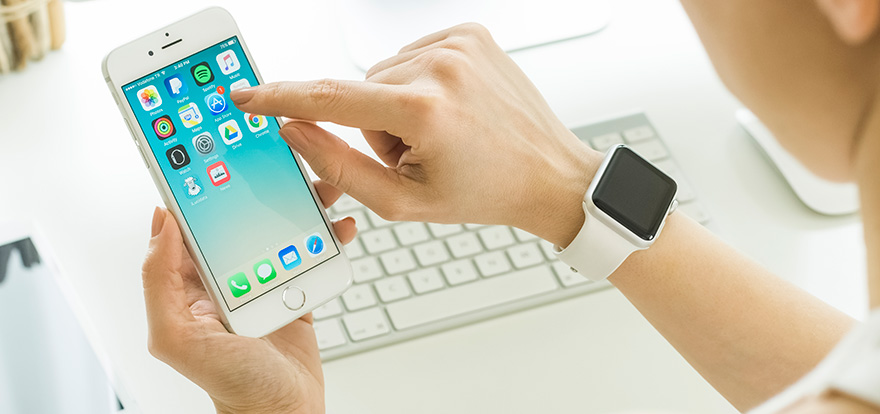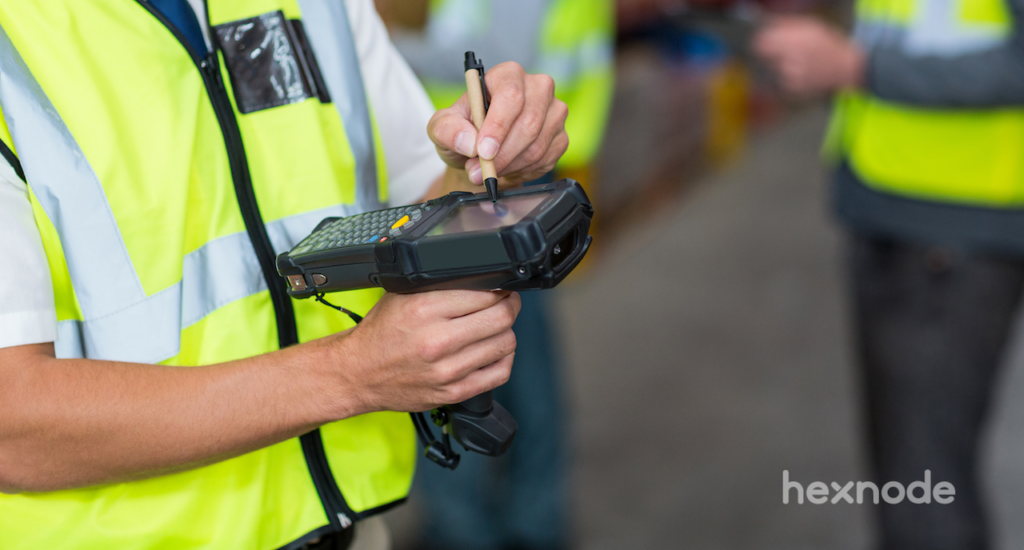Wearables in the workplace are one of the recent favorites in the IT and mobile industry, especially with recent VR gadgets introduction. Wearables are transitioning from trendy gadgets to useful technology. Such devices act as an additional screen for your smartphone. Doing tasks like telling time, giving notifications and running apps – the major details consists of the data you can collect from the sensors in the device. Opposite to the common belief, Wearables consists of actually three different styles: monocular, immersive, and wrist-worn.
Many companies are introducing wearables in the workplace for their wellness programs to make them a success. Sensors analyze time and type of activity that are involved in completing a task and provide the companies with more information. The activity-tracking bands track how many steps you take, how many calories you burn, heart rate and other health and wellness statistics. As of now, fitness-tracking wearables are extremely popular for consumers but user interest in the device usually fades after the three-to-four month whereas wearables in the workplace are taking on vital roles every day.
Organizations being large or small have been steadily embracing BYOD in lieu of cost savings and increased productivity as their primary motives but the risk to sensitive data overcome the benefits. It is logical that most of the people who bring their laptops to use at work usually connect to the company’s WiFi network. This causes the companies to run into wireless network bandwidth performance problems as a single Wi-Fi connection can support 15-20 devices providing good speed to each connection. If more than that number is connected, the connection signal strength begins to deteriorate. This opens the possibility of network instability. Increasing exposure to malware and viruses due to lack of control into personal devices accessing the network has put the security of company’s confidential data at stake.
Use of wearables in the workplace
In a corporate culture that is always on, smartwatches, glasses, and other wearable digital gadgets act for improving worker wellness and productivity. In a survey sponsored by the software company Cornerstone OnDemand, 66% of the U.S. working population responded that they will positively use wearable in corporate culture. People who were reluctant in using digital gadgets can be motivated by offering monetary benefits such as reduced health insurance premiums or discounted exercise programs. Smartwatches and glasses, such as the Apple Watch and Google Glasses are known for their personal assistant features alongside fitness tracking.
Advantages of BYOD
The trend of using own device at work can make it easier for workers to accomplish their tasks. Companies have introduced simple and lightweight mobile applications that allow employees to access and share corporate data more smoothly. Users can work at their convenience from anywhere. BYOD can even minimize the usage of different applications if workers take advantage of the apps available.
Privacy challenges
It is logical enough to expect that there will be objections and privacy and security are issues of primary concern. Most of the employees will not be comfortable with the fact that management is having access to all of their data. The devices can save photos, record vital signs, or track movement.
Of course, not many employees want to wear fitness band or smartwatch. These advances affect every aspect of human lives both at work and play. This rapid technological advancement leaves us wondering if the changes which the new technology brings are only positive. Texting and email affect our verbal and written communication skills.
Corporate Risks involved in BYOD primarily include –
• Malicious Code
• Device Attacks
Most of the apps across all wearable platforms fail basic security tests.
Wearables in the workplace: Additional efforts by the Employer
IT can expect increased support costs associated with BYOD for helping employees comply with the corporate policies and federation laws. Developers will require the help of device admins to help plan and implement apps on the devices which are different in make and configuration, and admins will have to simultaneously ensure that the devices should not put corporate resources at risk.
IT of the company must be prepared for the additional pressure on the corporate infrastructure which they get from personal devices connecting to their internal systems. If you are letting workers store sensitive data on their own devices the risk of corporate data is at risk if a device is lost, stolen or infected with malware. When an employee leaves the company along with the device, the organization might be unable to reclaim sensitive data.
Even if workers use their own devices, the organization must ensure that the data is protected as required by regulation and law wither through RSA or VPN or security certificates. The enterprise must also understand the liability if sensitive data is compromised.
Final verdict
With immersive gadgets like VR headsets and smart glasses being introduced, corporate trainees can indulge in the training and the presentations which keep the interest in the content. In cutting edge corporate world, employees need immediate access to corporate manuals, training materials, or tutorials that can give them a step-by-step walkthrough of a specific task or help the customer virtually. Wearables in the workplace give them instant access and convenience to the customer as well. Training and induction cost to the company is reduced as well as the number of training programs is reduced as the employees have instant access to all the online content and documentation.
Using wearable technology in corporate strategy can reduce costs and increase productivity. However, any device that records any kind of data like audio, the video could be a threat to co-workers’ privacy and business security. Employers need to gain their employees’ trust and be transparent about how the gathered employee data will be used. One thing businesses should be doing is to restrict the use of wearables devices at work and monitor them if they are connecting to corporate networks. The policy of the company should protect the privacy of the individual and the privacy of the corporation.





